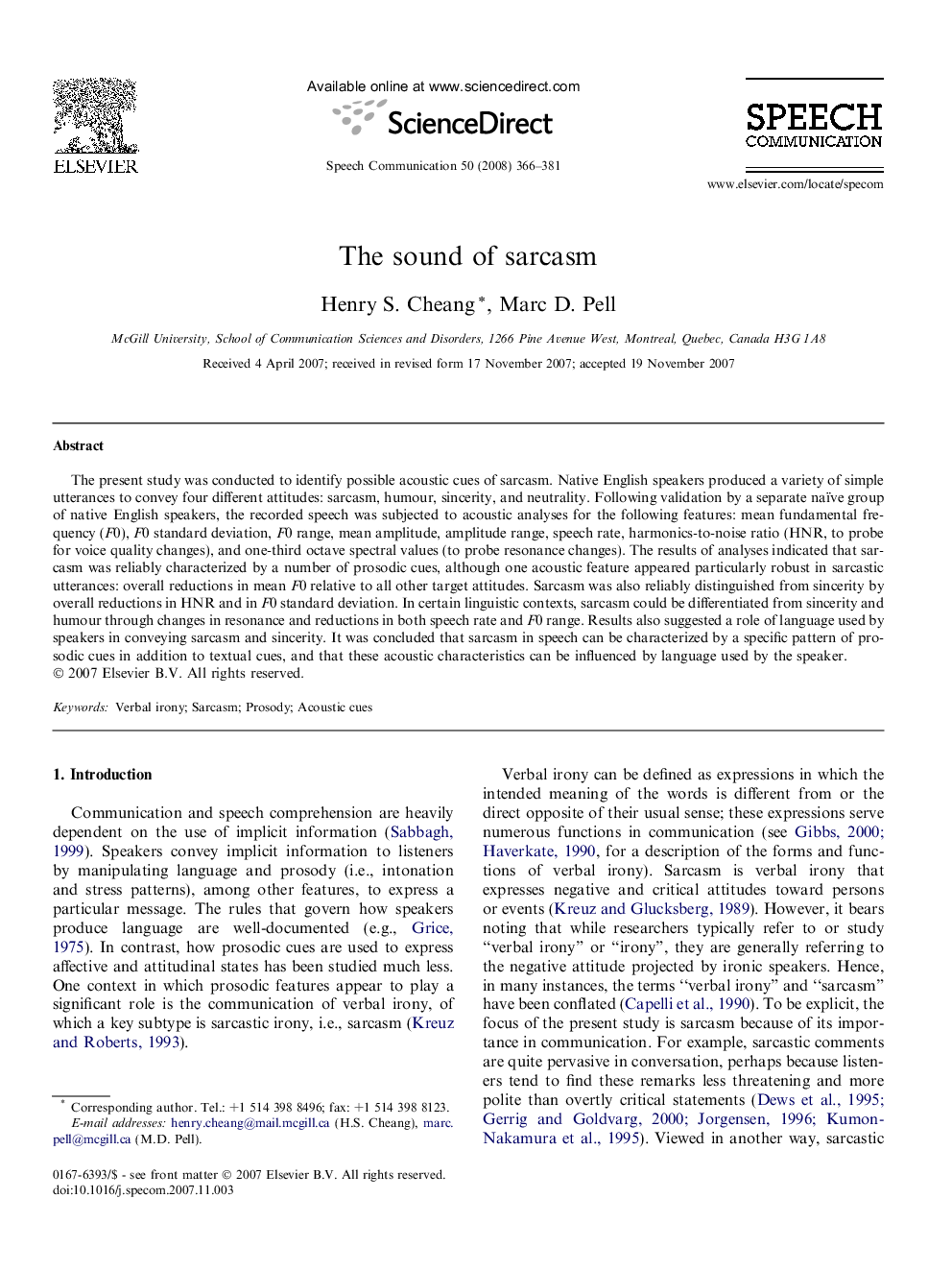| Article ID | Journal | Published Year | Pages | File Type |
|---|---|---|---|---|
| 566030 | Speech Communication | 2008 | 16 Pages |
The present study was conducted to identify possible acoustic cues of sarcasm. Native English speakers produced a variety of simple utterances to convey four different attitudes: sarcasm, humour, sincerity, and neutrality. Following validation by a separate naïve group of native English speakers, the recorded speech was subjected to acoustic analyses for the following features: mean fundamental frequency (F0), F0 standard deviation, F0 range, mean amplitude, amplitude range, speech rate, harmonics-to-noise ratio (HNR, to probe for voice quality changes), and one-third octave spectral values (to probe resonance changes). The results of analyses indicated that sarcasm was reliably characterized by a number of prosodic cues, although one acoustic feature appeared particularly robust in sarcastic utterances: overall reductions in mean F0 relative to all other target attitudes. Sarcasm was also reliably distinguished from sincerity by overall reductions in HNR and in F0 standard deviation. In certain linguistic contexts, sarcasm could be differentiated from sincerity and humour through changes in resonance and reductions in both speech rate and F0 range. Results also suggested a role of language used by speakers in conveying sarcasm and sincerity. It was concluded that sarcasm in speech can be characterized by a specific pattern of prosodic cues in addition to textual cues, and that these acoustic characteristics can be influenced by language used by the speaker.
